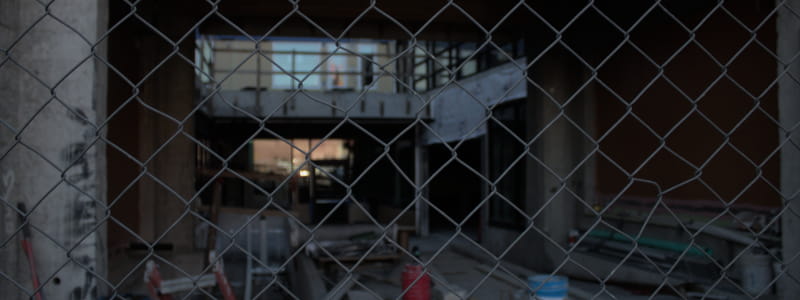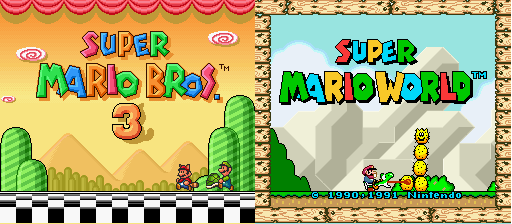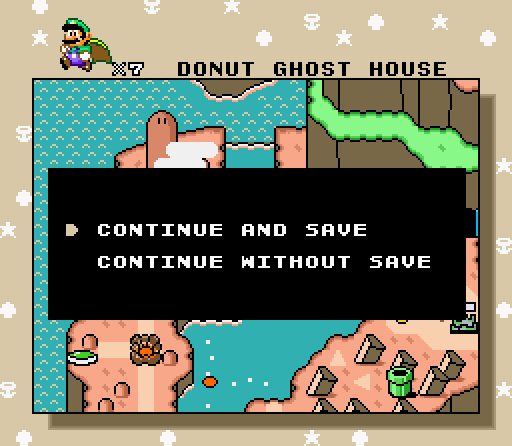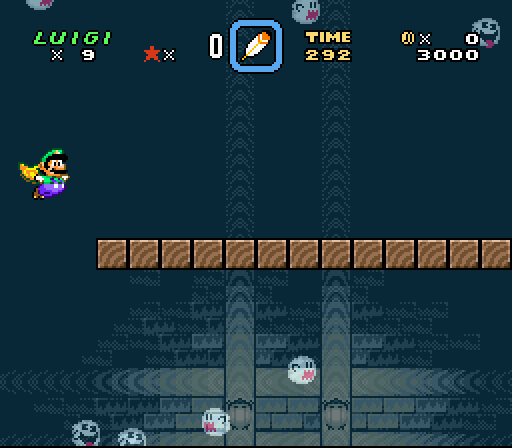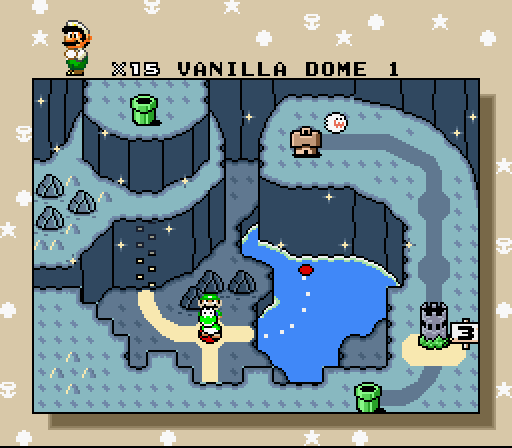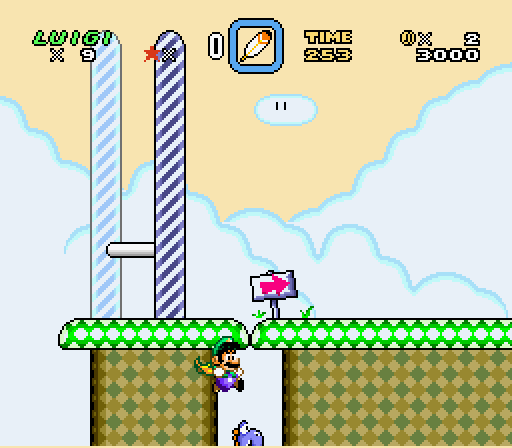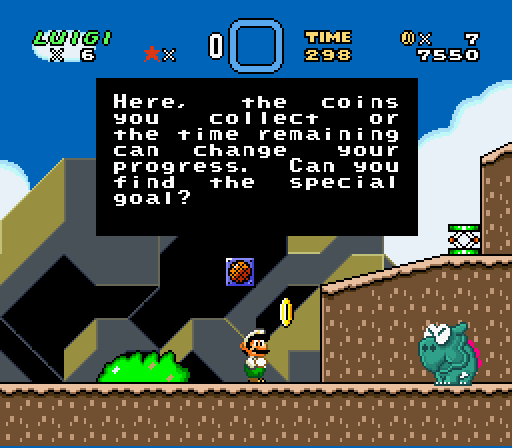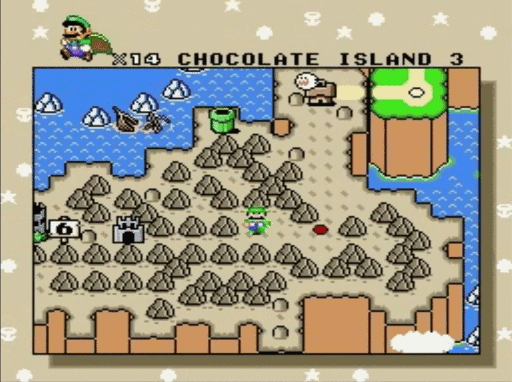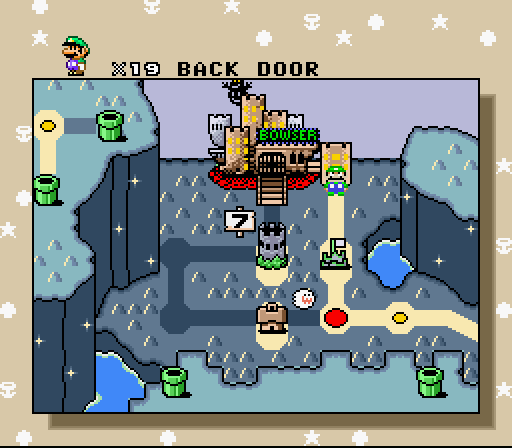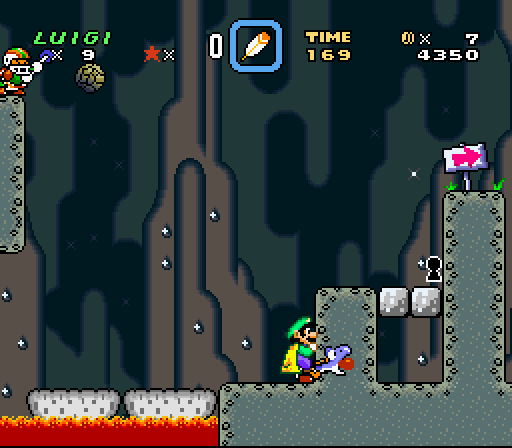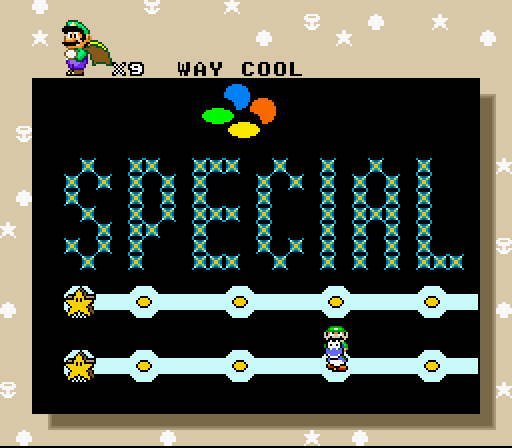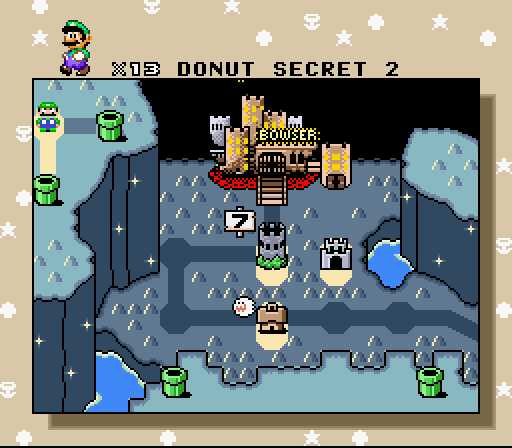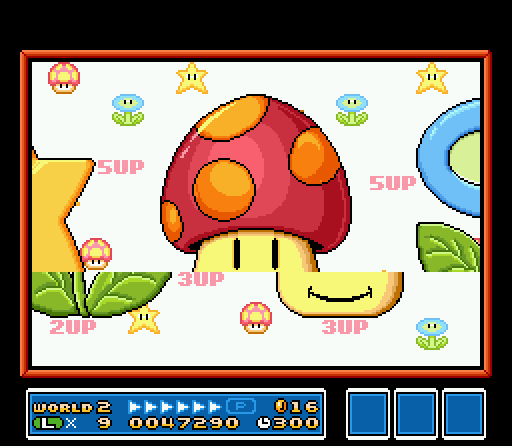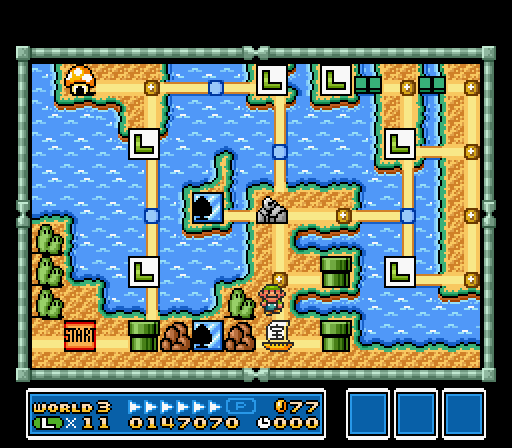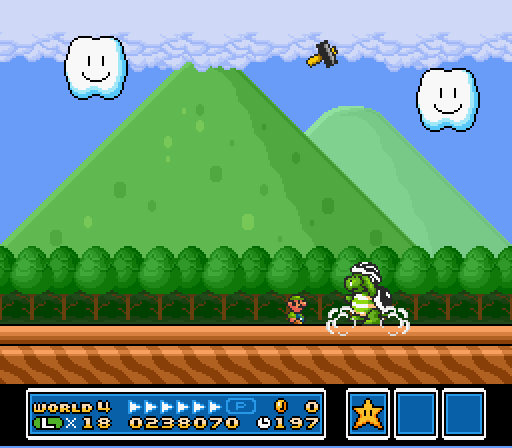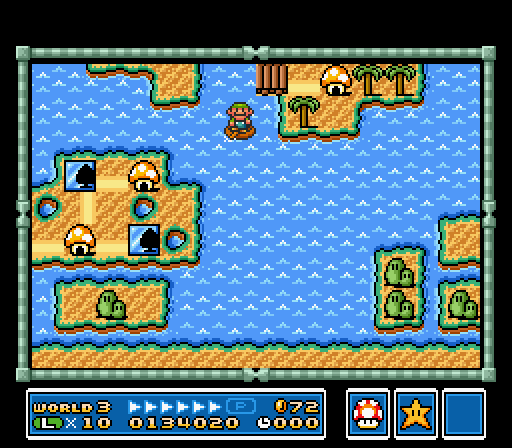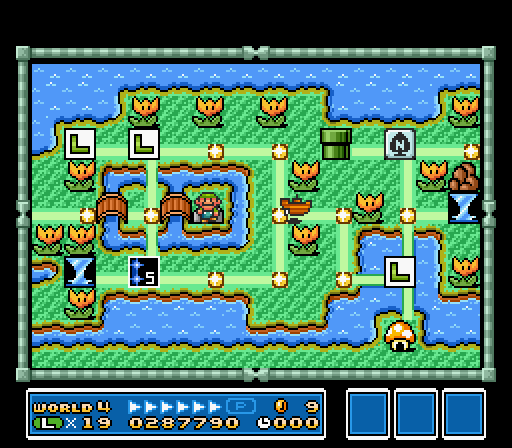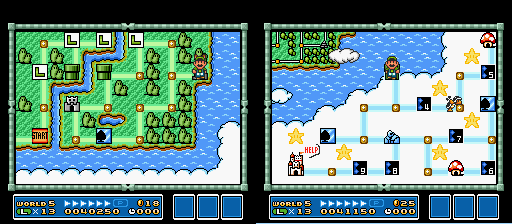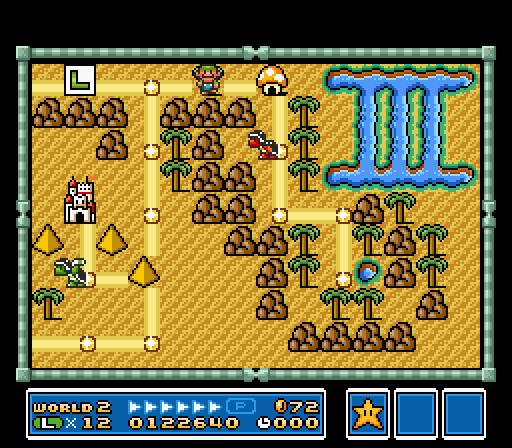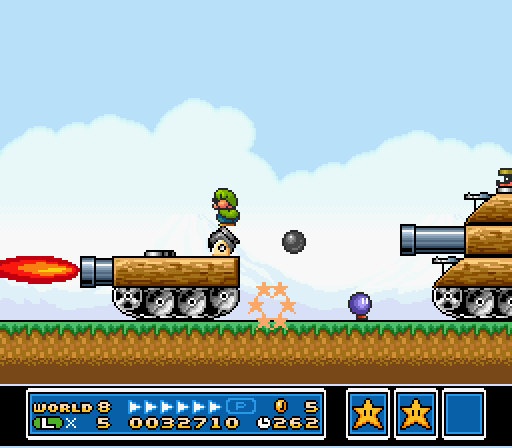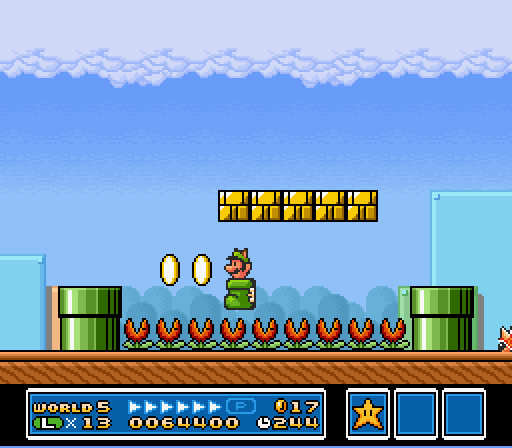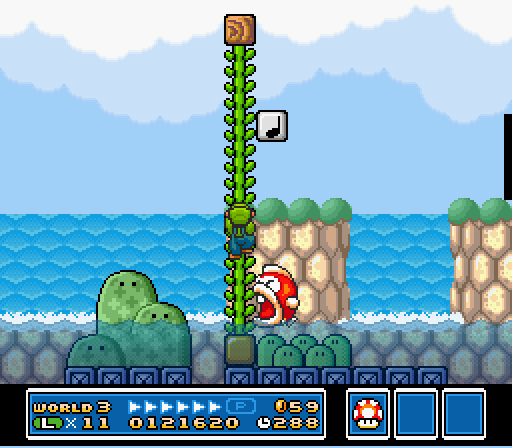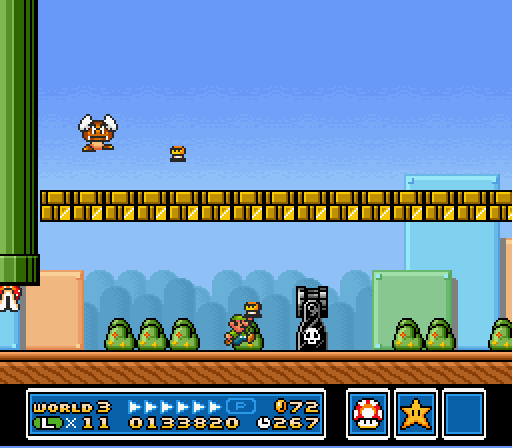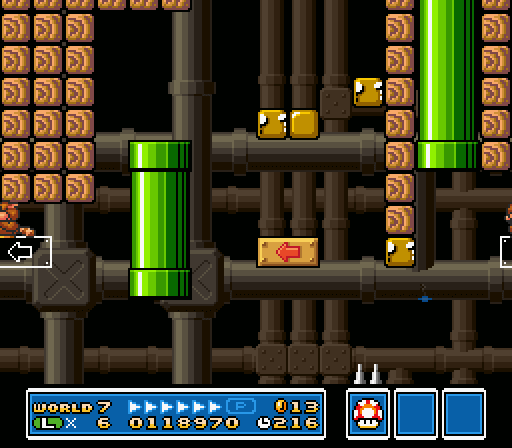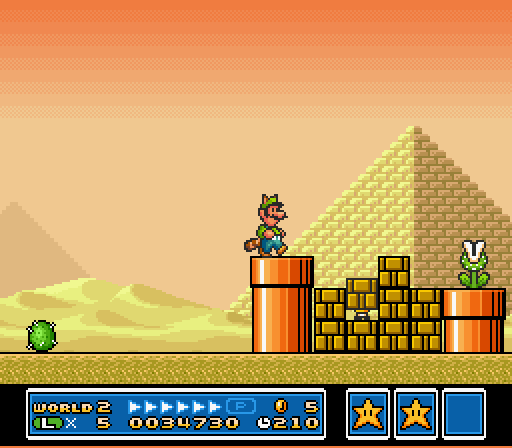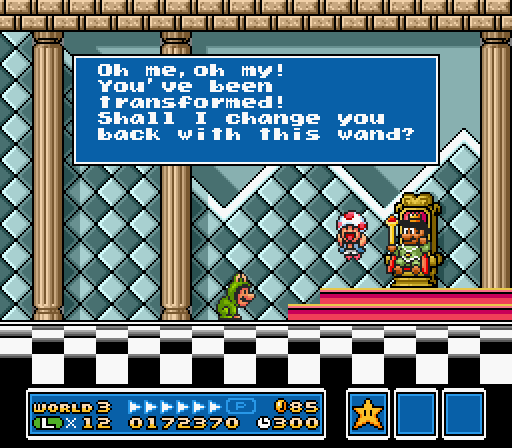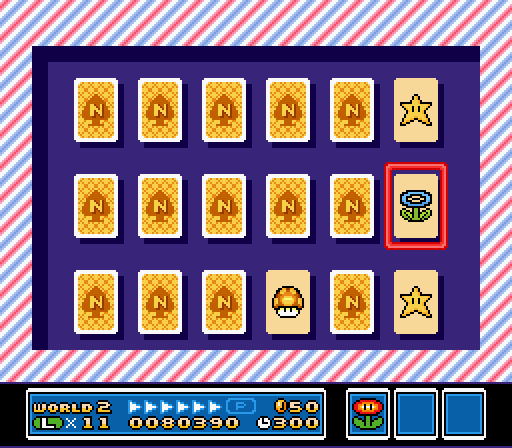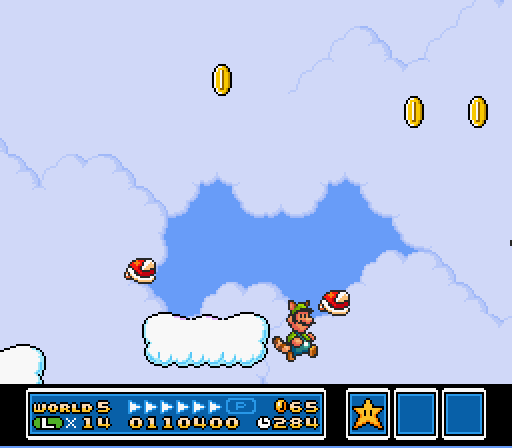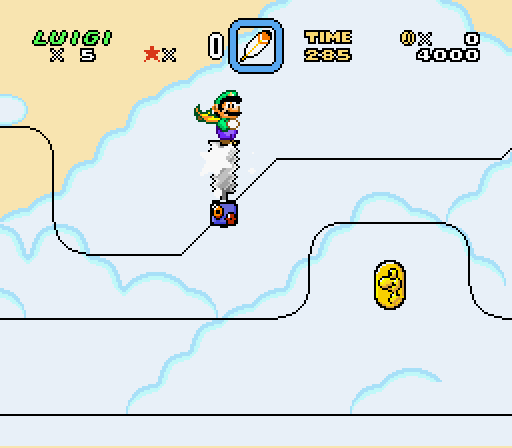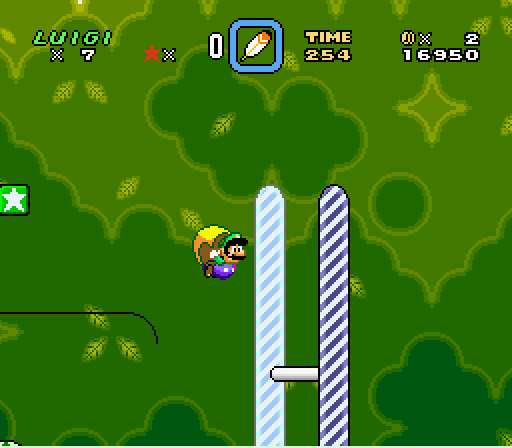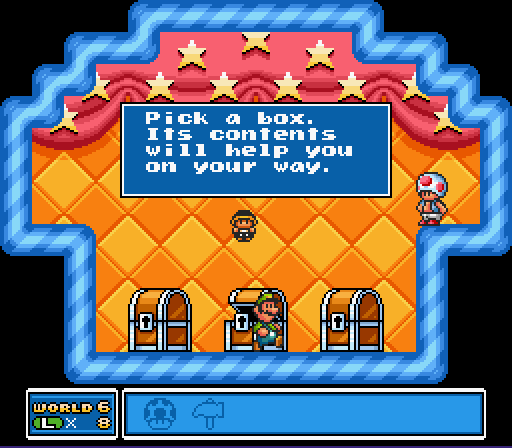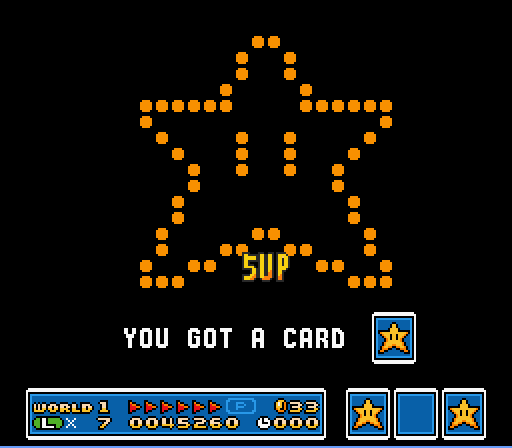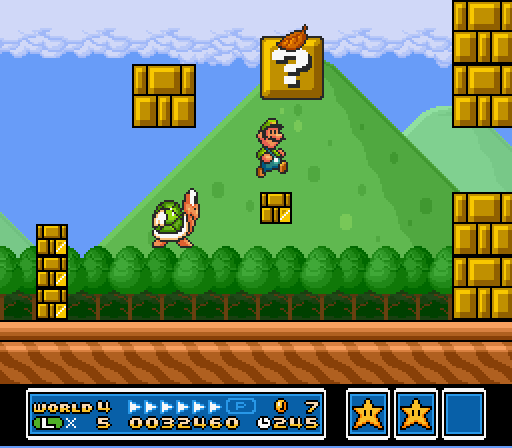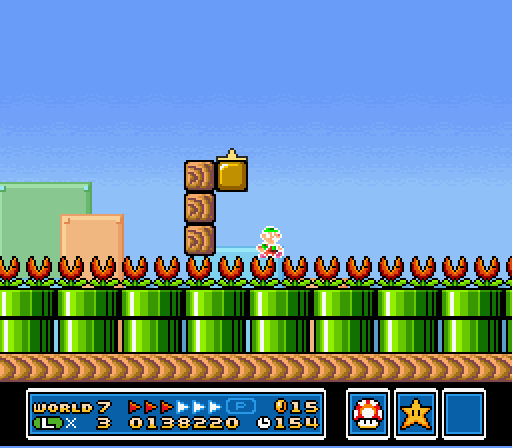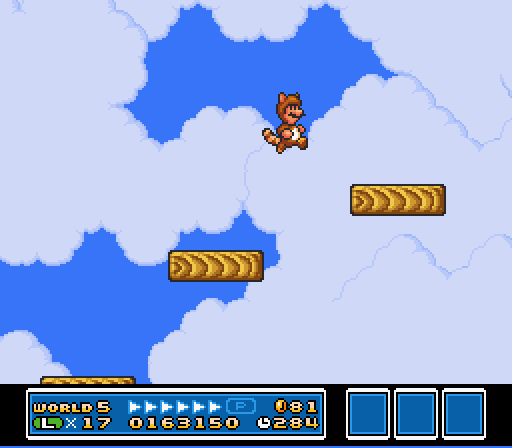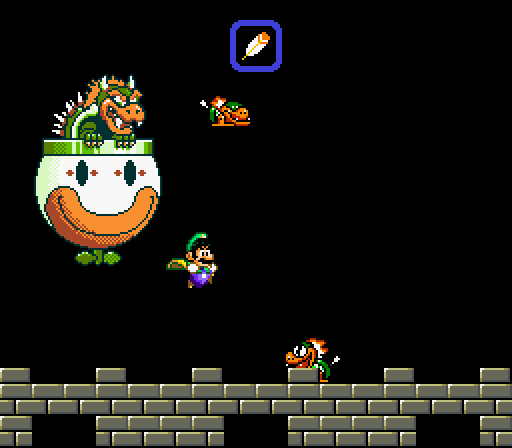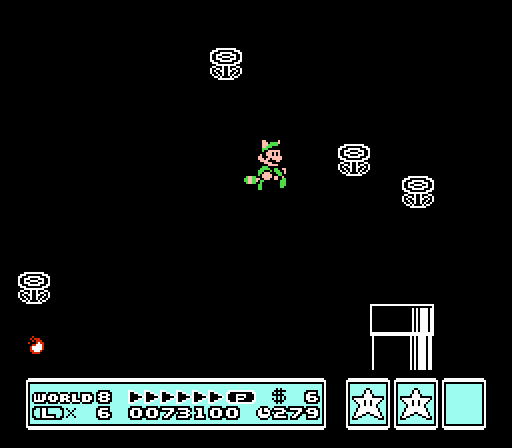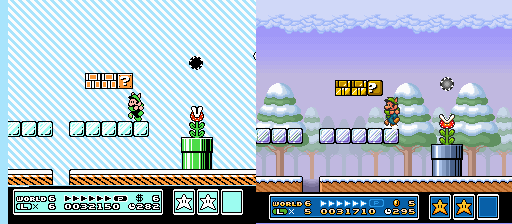Actually, sadly, this negative review o’ Wario Land 3 isn’t as bad as the positive one I made fun o’, since this writer actually managed to consistently follow his thesis.
Still, his arguments are shallow, so let’s take the effort to defend this 10+-year-ol’ game.
This reviewer argues that Wario Land 3 is not only bad, but apparently the prime example o’ a bad sequel. Wario Land 3 must have some fundamental flaws to warrant that particularly shameful spotlight.
1 ) Don’t repackage old mechanics as new
It doesn’t.
He complains that Wario Land 3 is a “step down” from Wario Land 2 simply ’cause it makes you learn your abilities by collecting treasures, rather than starting out with them. Nowhere does he actually state how this affects how fun the game is; he just seems to imply that mo’ is always better. In particular, he compares Wario Land 3 negatively to Banjo-Tooie, which started Banjo & Kazooie with their abilities from Banjo-Kazooie & gave them new abilities in addition to these. What this reviewer doesn’t mention is how many people panned Tooie for being o’er-complicated & giving Banjo & Kazooie a lot o’ abilities that were rarely used & rarely interesting — such as picking stuff up with a backpack & sleeping in it to gain health.
While he compares Wario Land III to Zelda games, he forgets to also mention Metroid & Castlevania games, as well as many RPGs. ( ¿Thousand Year Door makes you recollect badges you got in the 1st Paper Mario? It’s obviously inferior to Paper Mario. ) This is a common gameplay mechanic in video games. It’s true that it doesn’t make sense from a story point o’ view; — so much that it’s a common trope: “Bag of Spilling” — but when you get to the point o’ criticizing a Wario game for not being logical, you’ve become the illogical one.
Moreo’er, he ignores the fact that the game does do new things with Wario’s powerups. Wario not only unlocks the ability to swim, but also the ability to swim past currents, which Wario ne’er learns in II & which dynamically changes how players interact with level design. This is a vital aspect o’ Wario Land III vs. Wario Land II: the way Wario’s interaction with levels changes as the game goes on. In Wario Land II, once you’ve gotten the 1 or 2 exits in a level & found the bonus thrown in, you’re done — nothing new to get from that level.
But, all right, this is just 1 point. I’m sure he has many other good reasons.
2 ) Expand on old mechanics to improve them, and/or create new ones
The example I just gave before is ne’er addressed. Nor does he mention the key-&-chest system, — you know, the main mechanic o’ the game — the day-&-night system, the way levels change as you venture through the game… It almost makes me wonder if this person e’en played this game.
OK, now, ¿what does he talk ’bout?
Wario Land 3 not only goes backwards in terms of Wario’s moveset but ruins one of its strongest, most most defining features, the No Death system.
That’s interesting, since Wario Land 3 clearly still has this system, as well as status effects. Don’t tell me he’s actually going to complain ’bout the “Game Over” on the final boss, as if that matters…
In Wario Land 2, Wario loses coins instead of health when attacked, in addition to being knocked back. These coins are used to pay for minigames which reward the player with treasure when won.
( Smacks forehead. ) ¿’Cause Wario doesn’t lose coins, the “No Death system” is ruined? ¿Is this guy high?
Ironically, it just so happened that I was thinking ’bout the changes ’tween Wario Land games & thought to myself how Wario Land II didn’t do the “No Death system” as well as Wario Land 3 ’cause it made you lose coins by getting hit, thereby losing the neutral aspect o’ getting hit. What — to me, a’least — made the “No Death system” work so well was that it changed the very meaning o’ getting hit: it wasn’t just something that was “bad” & “to be avoided,” but something that varied by context. It meshed well with status effects — effectively treating getting “hurt” as just ’nother status effect, which could be bad or good ( speedrunners actually intentionally get hurt sometimes ), just like status effects. This is good, ’cause for some, it can be hard to tell the difference ’tween getting “hurt” & being hit with a status effect. I saw 1 person once complain ’bout this uncertainty for Wario Land 4, & I’m sure it’d apply to Wario Land II, just to a much smaller degree, since losing coins isn’t that big a deal in Wario Land II.
Interestingly, there is 1 case where I think Wario Land II was better than Wario Land 3: the fact that coins were mo’ common & had mo’ importance ( though not as much as in the 1st Wario Land ). While I think, in general, Wario Land 3’s level design was much mo’ interesting than Wario Land II’s ( I can barely e’en remember its levels, whereas I can remember so much from 3 ), I do miss the coin caches hidden round its levels.
¿Why do I say this is “interesting”?
Arguably this increases the importance of coin collection, but each try at the minigame costs only 10 coins, and since Wario cannot lose any collected coins, the increased importance of coin collection becomes overshadowed by these other factors, which greatly reduces Wario Land 3’s difficulty in comparison to Wario Land 2.
Anyone who is actually familiar with… any Wario Land game, marvel @ this.
-
Minigolf games only cost 10 coins @ the start. Later on they cost up to 50.
-
Minigolf games are a thrown-in mechanic that aren’t important @ all. You could take them out & the game would be just as good — perhaps better, since that game gets tiring after a while. Actually, if he mentioned the minigolf game itself as a downside, I might agree with him, ’cept for the fact that Wario Land II’s bonuses were e’en worse.
-
He essentially argues that coins are mo’ important in Wario Land 3 ’cause there’s fewer o’ them, & notes that they’re also used less oft. Any rational person would conclude that, in such case, coins are obviously less important.
-
He’s arguing that the difficulty ’tween Wario Land II & 3 is determined by how many coins one has. Yes, the 1 thing that stops one from beating Wario Land 3 isn’t Wolfenboss or the cloud jumps in “S6 Above the Clouds”; it’s running out o’ coins & not being able to play minigolf, &, bizarrely, not being able to just go round killing enemies & breaking blocks till one has ’nough. That’s not hard: that’s tedium.
The same applies to Wario Land II. Money is ne’er a problem in that game, e’en if you get hit all the time. If you think that’s what makes that game hard, & not the bosses or level design… You must be some idiot savant. ¿Do you get hit by every enemy & not collect any o’ the hundreds o’ coins lying round?
The level of punishment lost by removing the element of Wario losing coins when attacked turns Wario Land 3 into an upsettingly easy game. Wario Land 3 goes backwards instead of bringing new things to the table.
( Laughs. ) Wario Land 3 is “upsettingly” easy ’cause it doesn’t make you grind for coins ’nough. I particularly love how “punishment” is a good thing in a video game.
¿What does any o’ this have to do with “bringing new things to the table”? ¿& should someone who uses a cliche like “bringing new things to the table” be complaining ’bout a lack o’ originality?
3 ) The sequel should stay true to the series, but stand out
This is meaningless & likely self-contradictory. What any individual considers to be “true” to a series varies; & if something stays too “true,” it’s certainly not going to stand out much.
He just shows a bunch o’ videos & claims that Wario Land 3 is just like Wario Land 2, ’cept for the changes he mentioned earlier, which is Wario having to learn his powerups, the minigolf game, & there being fewer coins. No mention is given to key-&-chest mechanic, day-&-night mechanic, or music coins.
I have a feeling this guy’s only experience with these games are these YouTube videos.
He then contrasts Wario Land 3 with the way Zelda does everything different in every new game.
If I want a game with more emphasis on puzzles, I’ll play Oracle of Ages, if I want a game with more emphasis on narrative I’d play Majora’s Mask.
Those are such bad examples to give that I almost think he’s intentionally trying to be stupid as a joke or something. Oracle of Ages is certainly mo’ similar to its twin, Oracle of Seasons, & Majora’s Mask literally reuses assets from Ocarina of Time, which also focuses on story. I’m not saying they’re the same — but they’re certainly closer than Wario Land 3 is to Wario Land II. So this guy hasn’t played any o’ those games, either.
A successful sequel is hard to make, especially when following a very well-received game. Wario Land 3’s mistakes make it the poster child of all the mistakes that can be made in making a sequel. And without a successful sequel, a franchise is doomed to fail.
Too bad Wario Land 3 didn’t just come out last year & the series didn’t continue for a few mo’ games afterward. Wario Land 3’s such an amazing failure, it ruined the franchise while still allowing it to continue being successful for years afterward.
In the comments, after some dumb commenter asked if he should only get Wario Land 3 if he got all 4 o’ them… e’en though you can’t get 4 on the 3DS, ’less he was an Ambassador 5 years ago, which is unlikely… But whatever. He says this:
Playing Wario Land 3 after 2 is like playing Spyro Enter the Dragonfly after playing Year of the Dragon
I remember how Wario Land 3 was full o’ game-breaking bugs that happened all the time & took fore’er to load ’tween levels.
Popping the Party Balloons
While looking round the site, I noticed the dumb tagline, “Honest Game Journalism” — as if I’d expect them to have a tagline that said, “Game Journalism that Lies Straight Into Your Fat Face.” They didn’t succeed @ that goal, considering this review’s inaccuracies in regards to… well, every game mentioned, actually. But, still: if you have to emphasize your “honesty,” no rational person would trust that tagline, anyway.
In April of 2012, Gather Your Party launched as an alternative source of video game related media. Its creation was a direct result of the growing discontent with the behavior of major outlets across the internet.
Sigh. It’s ’nother 1 o’ these groups, sticking it to the evil large corporate video game websites that nobody cares ’bout. ’Cause being told a shitty game isn’t shitty is right up there with The New York Times lying ’bout what “torture” is. Ne’er mind the fact that everyone just gets their opinions o’ video games from full playthroughs by some pastyfaced nobody on YouTube — kind o’ like this reviewer clearly did for Wario Land 3 & II.
Due to our pro-consumer stance and desire to pursue ethical video game journalism, it is our policy to disclose information pertaining to possible conflicts of interest, such as when we receive review copies, or when a member of our staff has personal or professional ties to a developer or publisher.
I love how they promise to mention when they got free gifts, & not promise to, you know, not accept them.
I’m glad they promise to tell me ’bout personal ties to developers. I expect you to tell me all ’bout this reviewer’s steamy sex antics with the whole development team o’ Wario Land II so I can make up some online club & go round acting like a belligerent asshole to strangers ( so, Friday night, basically ) & add the word Gate to my name, ’cause that’s original. We’ll call it WarioLandGate, & it’ll be super important. This is ’bout corruption, after all. Whatever that means in this context.
Embarrassingly ’nough, the latest news story from this impressive game news site was from July 2015. Most o’ the stuff they’re doing now is streaming & podcasts, which have the double benefit o’ being hipper & lazier. & useless when there’s much better stuff round. The editorials they do have are nothing mind-feeding. ¿Did you know that Mighty No. 9 sucks? Well, Gather Your Party told you all in a tone as if this is some revelation. The “humor” is trite pop-culture references, like “which video game celebrity will die,” “waifus,” & spelling “video” “vidya.” The website design is so sickeningly slick that it screams o’ “CONVERTING” templates.
Basically, I can’t help get the feeling that this website was made mo’ to generate cheap hits, rather than to actually provide quality info or entertainment. Shocking then that I found it on Google — they’re usually so good @ ensuring these sites are made for me, not them.
